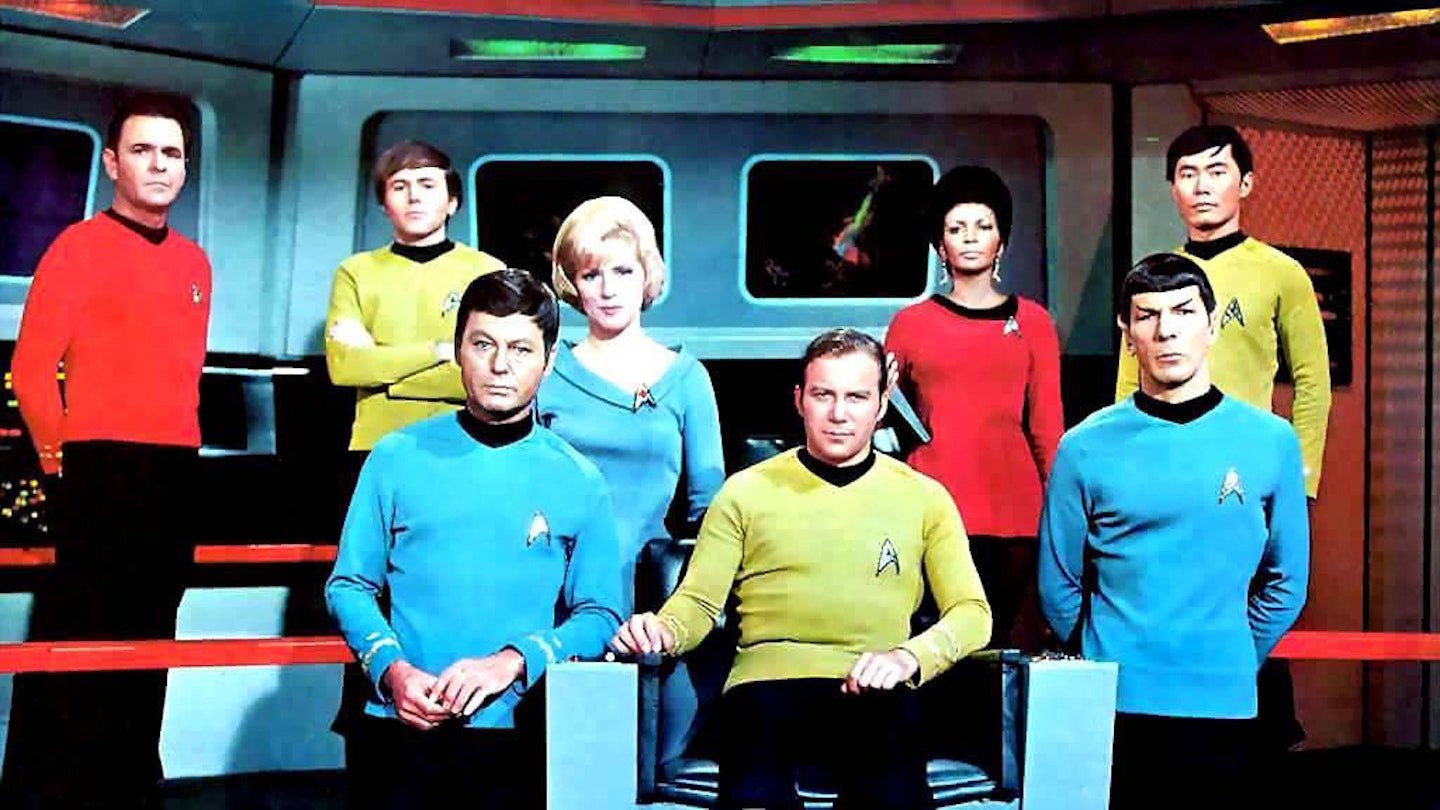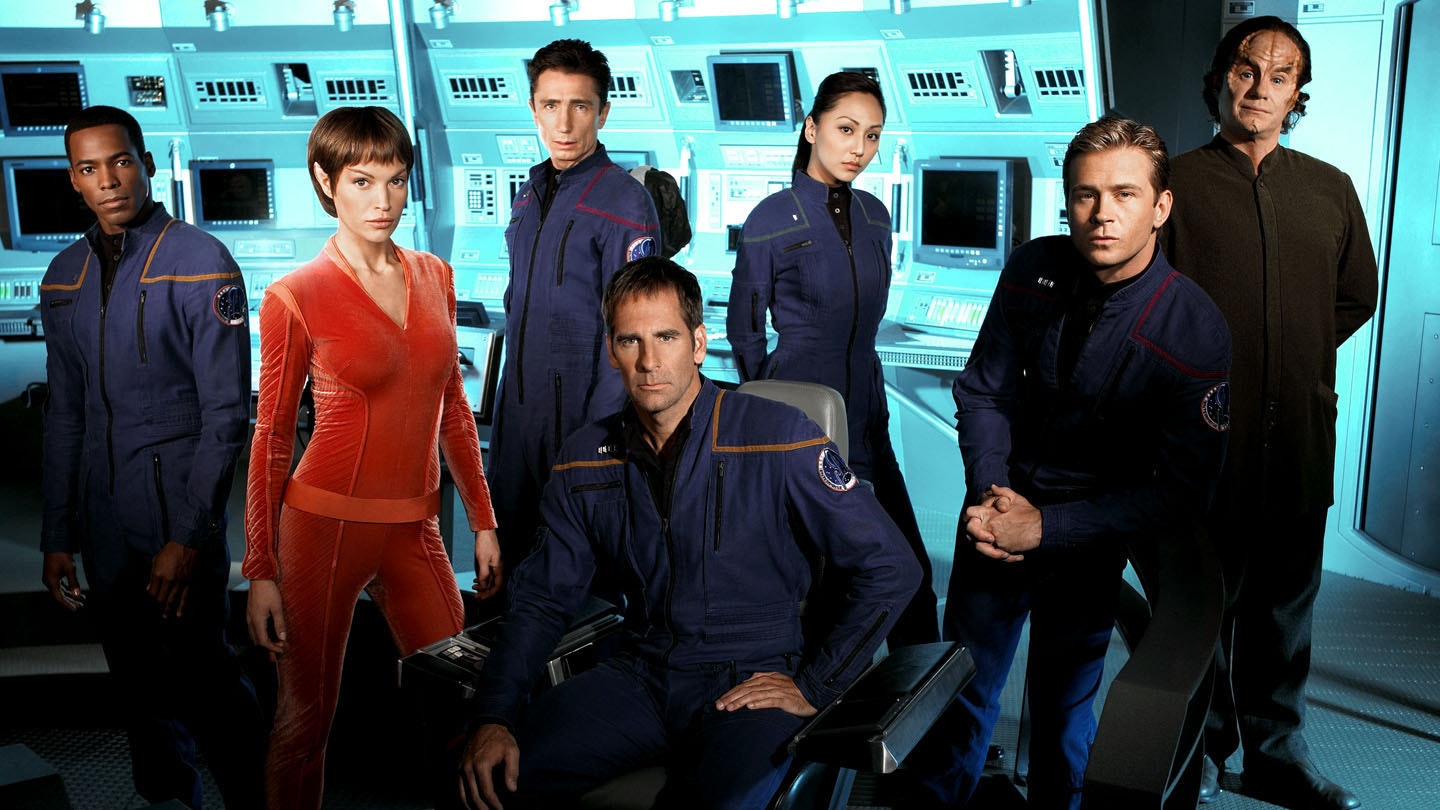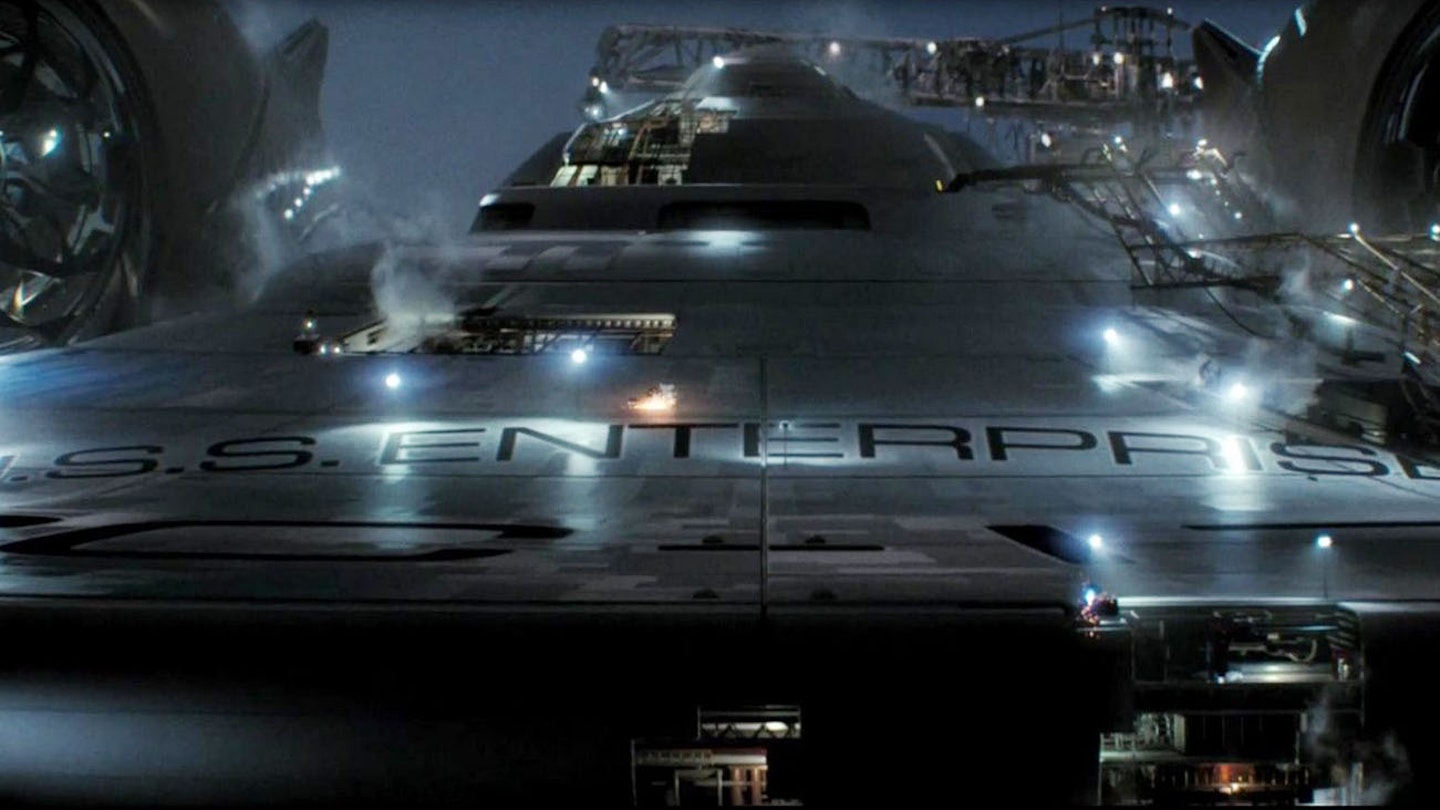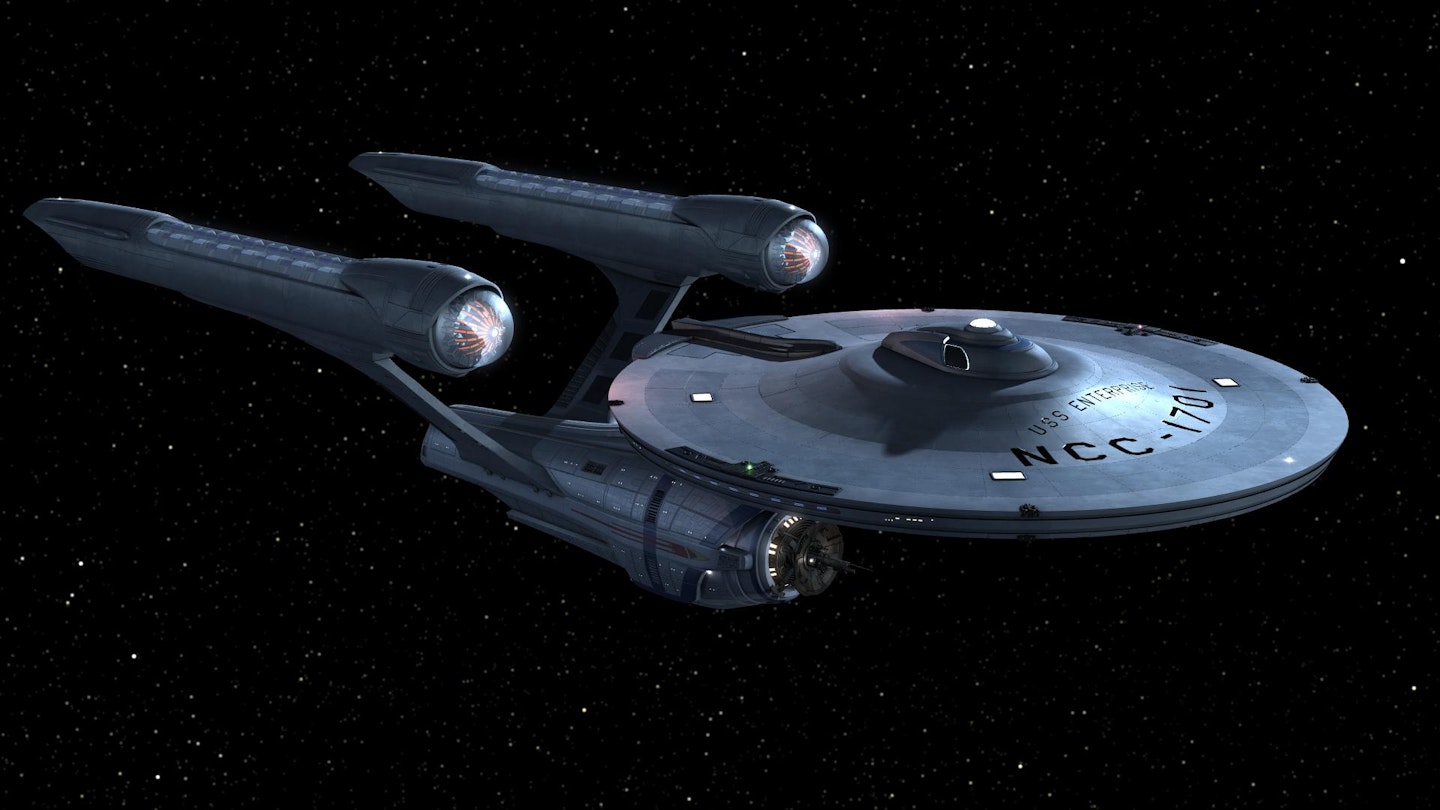Television: the final frontier? Star Trek, science-fiction’s ultimate franchise, is boldly going where several network TV executives have gone before and making a long-awaited return to the small screen.
Anew series has been officially confirmed for 2017, expanding an already bulging fictional universe and thrilling Trekkies from here to the Gamma Quadrant. With a 50th anniversary incoming, it’s as good a time as any to reflect on the highs and lows of Star Trek on TV – and speculate wildly on what’s to come.

The Original Series (1966–69)
The original and, by dint of that fact, the most beloved. Gene Roddenberry’s groundbreaking classic set the scene not just for an enormous multimedia franchise, but science fiction in general, inspiring Space Race-era children to a galaxy of possibilities.
What worked: In many ways, Roddenberry’s approach was pioneering. He hired literary science-fiction writers. He had interracial casting during a time of civil rights turbulence, and a Russian character during the Cold War. And most significant of all, he wrote complex, multilayered morality tales: stories set in the 23rd century, but with striking parallels for those in the 20th. His achievements can hardly be overstated.
What didn’t: If you really had to quibble, you might say that the cheap and cheerful production values have dated somewhat (the infamous Kirk vs Gorn fight being among the worst offenders). Beyond that, it’s biggest problem may have been scheduling. At 10pm, it aired too late for younger viewers and middling ratings caused NBC to (photon) torpedo it after just three seasons.

The Animated Series (1973–74)
In 1969, with original series cancelled, Star Trek as a franchise appeared to have gone the way of the Tkon Empire. But after success in syndication and a groundswell of fan support, it was revived in colourful, family-friendly cartoon form. Most of the key original cast lent their voices to the 2D revival, and crucially, many of the show’s writing staff returned too.
What worked: The seemingly unlimited possibilities afforded by animation seemed like a perfect fit for a show set in a futuristic space, and unlocked opportunities that the original series’ budget could never have allowed - such as the episode in which Spock is turned into a 40-foot clone of himself.
What didn’t: Despite the medium’s inexhaustible potential, budgets were still a wee bit tight, and the animation suffered. Money was so limited, in fact, that they couldn’t even afford to rehire Walter Koenig as Pavel Chekov. Without Roddenberry in the captain’s chair this is largely considered outside the canon. Think of it like Trek equivalent of the Star Wars Holiday Special: we know it exists but no one wants to talk about it.

The Next Generation (1987–1994)
18 years after Kirk and co hung up their phasers – a wait that felt like lightyears to Trekkies – the franchise returned to television in a brand new incarnation. The fictional chronology of the show jumped a century into the future and introduced Jean-Luc Picard (Patrick Stewart) as the new captain of an all-new Enterprise.
What worked: For a generation of fans, TNG is the definitive entry in the Trek canon: embarking on ambitious storylines, impressive-for-its-time special effects, and the best of Roddenberry’s optimistic, humanistic spirit. It worked too – The Next Generation remains the most successful iteration of the franchise, with an average of 20 million viewers per episode. Yesterday’s Enterprise and The Best Of Both Worlds remain stand-outs in this or any other sci-fi series.
What didn’t: In the 24th century, everyone has pretty much learned to get along, which didn’t give room for much dramatic conflict. New alien races were characterised almost exclusively by their forehead prosthetics and the introduction of the holodeck spawned a screenwriting crutch that would plague Trek for decades to come. Also: Geordie’s beard. No.
Deep Space Nine (1993-99)
The first Trek series without direct involvement from Roddenberry went deeper in more ways than one. Set in the same universe and timeframe as TNG, it generally kept out of the way of its bigger brother by setting up shop in a farther outpost of the galaxy, on the very edge of the Federation, ready to explore darker themes and plotlines.
What worked: By daring to be more grown-up (and adding CGI to its visual arsenal, a Trek first), DS9 became the most critically acclaimed entry in the canon. The ‘to boldly go...’ opening speech may have disappeared – space exploration was less of a concern on a static space station – but this is by far the boldest of anything bearing the Star Trek name. The Defiant, the Dominion War, the wranglings with the Klingon Empire – DS9 was Star Trek at its most fearless and paved the way for even grittier sci-fi like (DS9 writer) Ron D. Moore’s Battlestar Galactica.
What didn’t: Rivalry between Starfleet and Bajoran personnel, which was supposed to underpin much of the show’s internal conflict, lasted all of five minutes. Meanwhile, early seasons were too reliant on the wormhole to cough up a threat of the week. Once the theme tune sped up, Sisko shaved his head and Worf crossed over from TNG, though, DS9 kicked into high gear and never looked back. Except for the Odo/Kira romance. And Ezri Dax.

Voyager (1995–2001)
TNG’s second spin-off series achieved far less success than its deep space cousin. It was in many ways an attempt to bring the frontier spirit of the original series to a modern generation, acting as a sunnier counterpoint to Deep Space Nine’s more brooding approach.
What worked: Voyager boasted an intriguing premise: detailing the adventures of a ship stranded 70,000 light-years from Earth. This neatly paved the way for familiar Trek themes of cooperation and peace, as the Starfleet crew are forced to work together with the Maquis freedom fighters, plus aliens galore, on their seven-year journey home.
What didn’t: Voyager never quite lived up to its promise. Fans regularly deride it as the weakest Trek series, beset by a cheesy comic tone, uncomfortably one-dimension ethnic stereotypes, and ultimately squandered potential. Losing Kes, introducing Seven-Of-Nine and ditching the Kazon as Voyager’s main foe did, it has to be said, improve things immeasurably.

Enterprise (2001–05)
After Voyager, the series warp-sped back in time, jumping to the year 2151, over a century before The Original Series. Hiring Quantum Leap’s Scott Bakula in the lead, it told the story of how the United Federation of Planets came to be, with the first ever ship – the Enterprise NX-01 – to embark on interstellar travel.
What worked: As a sort of Star Trek: Origins, Enterprise expanded on key historical elements of the Trekiverse. Much of the world-building efforts – the dawn of the Prime Directive, the early years in the Human-Vulcan special relationship – is like galactic catnip to your average Trekkie. The stories weren’t the franchise’s strongest but the future war arc was a solid hit, linking the unfamiliar time period with concepts more familiar to the modern Trekkie.
What didn’t: The theme tune, Dear God the theme tune. Also, despite being a fanboy’s dream, Enterprise suffered from a heavy case of prequel-itis. Low stakes and a clunky approach to the series’ mythology meant that, like Voyager, it too often felt like a grand opportunity wasted. And then there was the finale, in which it’s revealed that the entire show was just a holodeck simulation in an episode of The Next Generation. Computer, End program.

The Future (2017)
Star Trek has stayed off television screens for over a decade, while it fizzed and dazzled in the cinema under JJ Abrams’ rebooting helmsmanship. Now it’s back, with a new series slated to air in January 2017. At time of writing, the future remains undiscovered country. We know that Alex Kurtzman, a screenwriter on both the 2009 reboot film and its 2013 sequel Into Darkness, will be overseeing the show, and that according to the press release, it will “introduce new characters seeking imaginative new worlds and new civilizations, while exploring dramatic contemporary themes”. But will it exist in the movies’ Vulcan-free timeline or return to the universe of previous shows? Most importantly, though, will it involve an Enterprise?
What might work: With such a gap since the last series, Kurtzman and his new crew might want to set a distance between all other iterations, and leap forward into another distant future. Perhaps this could be The Generation After The Next Generation, set centuries after Voyager and boldly going where no series has gone before. Whatever the direction it takes, there are many Trekkies who are glad to see Trek return in a longform format, where lofty sci-fi stories and ideas are given more room to breathe than the relatively restrictive boundaries of a two-hour feature.
What might not work: The Abrams/Orci/Kurtzman era of Trek, while critically and commercially successful, has attracted considerable ire from die-hard fans, who lamented the series evolving into less ‘talky science’ and more ‘explodey action’. With Kurtzman at the wheel for the new show, this could potentially feature more of the latter into a movie spin-off series. Only time will tell if Star Trek is able to live long – and, crucially, prosper.
